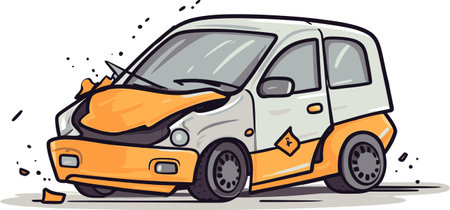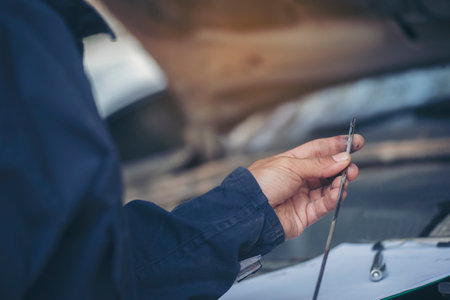1. Introduction
Your vehicle’s transmission is one of the most critical components that keep it running smoothly. Whether you drive an automatic or manual car, the transmission ensures power is properly distributed from the engine to the wheels. Like any mechanical system, transmissions can wear out over time, leading to performance issues or complete failure. When this happens, car owners are left with two primary options: rebuilding or replacing the transmission.
Overview of Transmission Issues
Transmission problems can emerge due to aging, lack of maintenance, overheating, or excessive strain from towing or aggressive driving. Below are common signs that your transmission may be failing:
Common Signs of Transmission Failure
| Issue | Description |
|---|---|
| Slipping Gears | The transmission unpredictably changes gears, leading to loss of power or jerking motions. |
| Delayed Shifting | A noticeable delay when shifting from park to drive or between gears. |
| Unusual Noises | Grinding, whining, or clunking sounds when the vehicle is in motion. |
| Leaking Transmission Fluid | Red or brownish fluid spots under the car, indicating a fluid leak. |
| Warning Lights | The check engine or transmission warning light illuminates on the dashboard. |
Why Consider Rebuilding or Replacing Your Transmission?
When experiencing transmission failure, vehicle owners typically have two choices: rebuilding or replacing the transmission. Each option has its advantages and drawbacks, and the decision depends on factors such as budget, vehicle age, and repair complexity.
Factors Affecting the Decision
- Cost: Rebuilding can be more affordable upfront, while replacement may offer long-term reliability.
- Time: A full replacement is usually quicker than a rebuild.
- Vehicle Age: Older vehicles may not be worth the cost of a replacement but could benefit from a rebuild.
- Severity of Damage: Minor issues might be resolved with a rebuild, but severe damage may require a full replacement.
Understanding the pros and cons of each option will help you make an informed decision when dealing with transmission issues. In the following sections, we’ll break down the advantages, disadvantages, and cost differences between rebuilding and replacing a transmission.
2. Rebuilding a Transmission: Pros and Cons
Understanding the Rebuilding Process
Transmission rebuilding involves disassembling the existing transmission, inspecting all components, replacing worn-out or damaged parts, and reassembling it with new seals, gaskets, and necessary upgrades. This process ensures that the transmission can function properly without the need for a full replacement.
Benefits of Rebuilding a Transmission
Cost-Effectiveness
One of the main reasons to choose rebuilding over replacing is cost-effectiveness. Rebuilding typically costs less than installing a brand-new or even a remanufactured transmission since it reuses many functional components while only replacing faulty ones.
Extends the Lifespan of Your Vehicle
Rebuilding a transmission can extend the life of your car, providing you with additional years of reliable use at a fraction of the cost of full replacement. If other parts of your vehicle are still in good condition, this option can be a smart investment.
Customizable Repairs
Unlike a complete replacement, transmission rebuilding allows for targeted repairs. Mechanics can address only the damaged parts while keeping the good ones intact, which can be beneficial, especially for older or customized vehicles.
Drawbacks of Rebuilding a Transmission
Longer Repair Time
A transmission rebuild can take longer than a replacement because the process involves diagnosing issues, sourcing the right parts, and meticulously reassembling each component. If you need a quick fix, rebuilding may not be the ideal option.
Potential Long-Term Reliability Concerns
The success of a rebuild largely depends on the expertise of the mechanic. Poor workmanship or the use of subpar replacement parts can lead to future issues, causing ongoing repairs and unexpected costs.
Not Always a Permanent Fix
Rebuilding a transmission extends its lifespan, but if there’s an underlying design flaw or excessive wear on multiple components, it may not be a long-term solution. In some cases, replacing the entire transmission might be a better investment.
Rebuilding vs. Replacing: A Quick Comparison
| Factor | Rebuilding | Replacing |
|---|---|---|
| Cost | Generally lower | Usually higher |
| Repair Time | May take longer | Typically faster |
| Longevity | Varies based on quality | More reliable long-term |
| Customization | Yes, specific components replaced | No, fully rebuilt or new transmission |
Rebuilding your transmission can be an effective way to save money while keeping your vehicle on the road. However, it’s crucial to weigh both the benefits and drawbacks before making a decision.

3. Replacing a Transmission: Pros and Cons
When your vehicles transmission fails, replacing it with a brand-new or remanufactured unit is one of the most effective solutions. This option ensures better reliability and often comes with a solid warranty. However, the higher cost can be a potential downside. Lets take a closer look at the advantages and disadvantages of replacing a transmission.
Pros of Replacing a Transmission
✔ Improved Reliability
A brand-new transmission or a high-quality remanufactured unit typically offers better long-term reliability compared to a rebuilt transmission. Since all components are new or rigorously tested, the chances of failure are significantly lower.
✔ Warranty Coverage
Most new and remanufactured transmissions come with a manufacturers warranty, often ranging from 1 to 3 years or even more. This provides peace of mind in case of unexpected issues.
✔ Less Downtime
Replacing a transmission is usually quicker than rebuilding one. Since the unit is pre-assembled, the installation process is more straightforward, reducing the time your vehicle spends at the shop.
Cons of Replacing a Transmission
✘ Higher Costs
One of the biggest drawbacks of replacing a transmission is the price. A new or remanufactured unit can be significantly more expensive than a rebuild, making it a costly investment.
✘ Potential Compatibility Issues
In some cases, a replacement transmission may not be perfectly compatible with your vehicles existing components, leading to the need for additional modifications or adjustments.
✘ Availability Concerns
Finding the right replacement transmission, especially for older or rare vehicles, can be challenging. If the exact unit is not readily available, you may face delays in getting your car back on the road.
Comparison: Rebuilding vs. Replacing a Transmission
| Factor | Rebuilding | Replacing |
|---|---|---|
| Cost | Lower | Higher |
| Reliability | Depends on the quality of rebuild | More reliable |
| Warranty | Varies | Usually longer and more comprehensive |
| Time Required | Longer (custom rebuild process) | Shorter (pre-assembled unit) |
| Availability | Always possible | Depends on vehicle and unit availability |
4. Cost Analysis: Rebuilding vs. Replacing
When deciding whether to rebuild or replace a transmission, cost plays a major role. The total expense includes parts, labor, and potential long-term savings. Below, we compare the average costs of both options to help you make an informed decision.
Average Cost of Rebuilding a Transmission
Rebuilding a transmission typically involves disassembling it, inspecting all components, replacing worn-out or damaged parts, and reassembling it with new seals and fluids. The cost varies depending on the extent of damage and the type of vehicle.
Breakdown of Rebuilding Costs
| Cost Factor | Estimated Price Range |
|---|---|
| Parts | $1,000 – $2,500 |
| Labor | $500 – $1,500 |
| Total Cost | $1,500 – $4,000 |
Labor costs for rebuilding tend to be high as it requires skilled work and time to diagnose and fix specific issues. However, if the mechanic replaces only the necessary parts, it can lead to significant savings.
Average Cost of Replacing a Transmission
Replacing a transmission means swapping out the old unit for a new, used, or remanufactured one. Prices vary significantly depending on the vehicle model and type of replacement transmission used.
Breakdown of Replacement Costs
| Cost Factor | Estimated Price Range |
|---|---|
| New Transmission | $2,500 – $6,000 |
| Remanufactured Transmission | $1,500 – $4,000 |
| Used Transmission | $800 – $2,500 |
| Labor | $1,000 – $2,500 |
| Total Cost | $1,800 – $8,500 |
Replacing a transmission is often more expensive, especially if opting for a brand-new unit. However, a new or remanufactured transmission typically comes with a warranty, providing peace of mind and long-term reliability.
Long-Term Cost Considerations
While rebuilding might seem like the cheaper option upfront, its essential to consider long-term costs. If the rebuilt transmission continues to have problems, you may face additional repair bills. On the other hand, a replacement may cost more initially but offer better reliability and longevity.
Cost Comparison Summary
| Option | Initial Cost | Potential Long-Term Savings |
|---|---|---|
| Rebuilding | Lower ($1,500 – $4,000) | May require further repairs |
| Replacing | Higher ($1,800 – $8,500) | More durable, likely fewer future costs |
Ultimately, your decision depends on budget, vehicle age, and long-term goals. If you plan to keep your car for several years, a replacement may be a better investment. However, for short-term use, a rebuild can provide a cost-effective solution.
5. Final Considerations and Recommendations
When deciding between rebuilding or replacing your transmission, several key factors should be taken into account. Your choice will impact both your short-term budget and long-term vehicle performance. Below, we break down the most important aspects to consider.
Vehicle Age and Overall Condition
The age of your vehicle plays a major role in whether you should rebuild or replace the transmission. If your car is relatively new and in good condition, rebuilding may be a cost-effective solution. However, if your vehicle has high mileage and other major components are also aging, replacing might be the better long-term investment.
General Recommendation Based on Vehicle Age
| Vehicle Age | Recommended Option |
|---|---|
| Less than 5 years | Rebuild |
| 5-10 years | Depends on mileage and condition |
| Over 10 years | Replace |
Budget Considerations
Your budget is another critical factor. Rebuilding a transmission is often cheaper upfront compared to a full replacement, but costs can add up if additional repairs are needed later. A new or remanufactured transmission may cost more initially but offers better reliability.
Typical Cost Comparison
| Option | Estimated Cost | Potential Hidden Costs |
|---|---|---|
| Rebuild | $1,500 – $3,500 | Possible future repairs if other components fail |
| Replace (New or Remanufactured) | $3,000 – $8,000 | Higher upfront costs but fewer unexpected repairs |
Long-Term Performance and Reliability
If you plan to keep your vehicle for many more years, replacing your transmission may provide better durability and reliability. A rebuilt transmission can function well, but it depends on the quality of the rebuild and the skill of the mechanic.
Who Should Choose a Rebuild?
- Drivers with tight budgets
- Owners of vehicles with lower mileage
- People who don’t plan to keep the car long-term
Who Should Opt for a Replacement?
- Drivers who want long-term reliability
- Owners of vehicles with high mileage or other aging components
- Those who can afford higher upfront costs for fewer future issues
Ultimately, the best option depends on your vehicle’s condition, your financial situation, and your long-term plans. Weighing these factors carefully will help you make the most informed decision.


